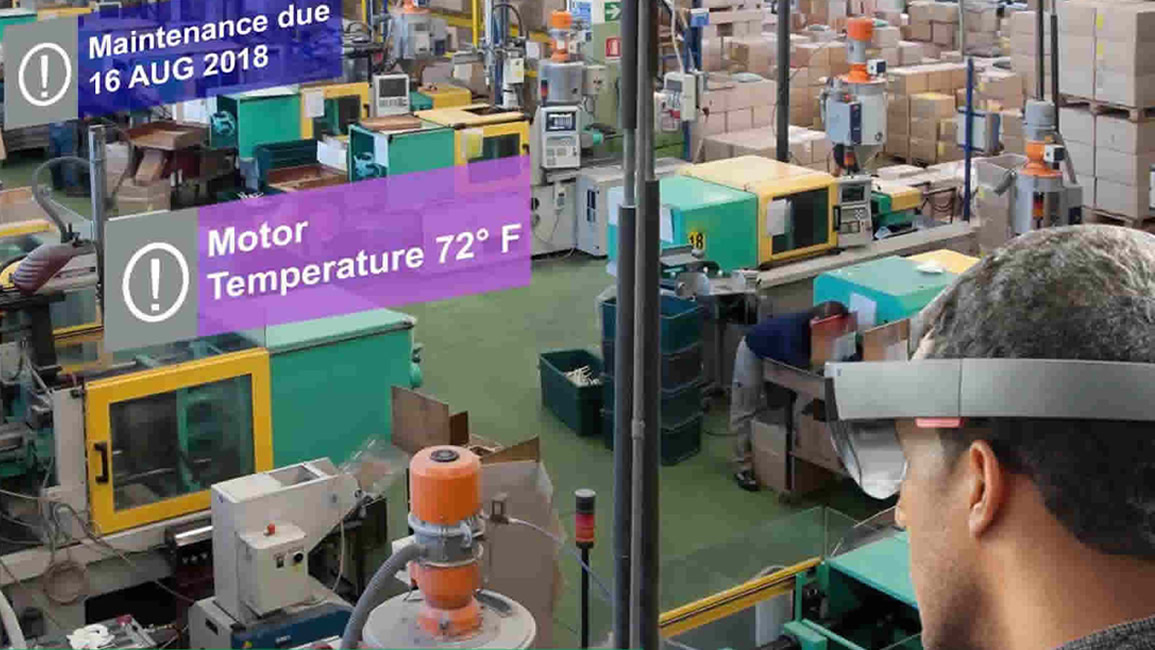Machine Learning for Industry 4.0
Machine Learning (ML) is a breakthrough in the field of computer science and has provided a radically new way to solve the problems, which are too complicated to solve by traditional programming. ML has impacted almost every verticals such as marketing, finance, medicine, entertainment, gaming and many more.
In marketing, ML can be applied to find the potential customer to target the online advertisement. In finance, ML algorithm can predict a person’s ability to repay his next due payment based on his past payment history. In medicine, level of damage and necessary medication can be suggested by the ML with just the images of the injury and some more information as input. In online entertainment, such as Netflix or Hulu etc, proper movie or a series recommendations are given with ML as the backbone. Many more examples and industries can be listed but Appville Softwares focuses on applying the ML for the industrial sector.
Why Edge ML
Most of the cloud services such as Amazon AWS or Microsoft Azure, focus on securing the data from IOT devices as a top priority. The servers are more powerful and can perform many ML training on cloud. In spite of all these features available in the cloud, the cloud model suffers from certain shortcomings.
The round trip of data from device to the cloud and back to the shop floor is not an efficient way for shop floor person to visualize. The latency involved is not a good experience for the maintenance person. In addition, transfer of unnecessarily huge amount of data to the cloud and storing/processing such a huge unnecessary data is also extra cost and maintenance overhead.
What is Edge ML
The drawbacks in cloud such as latency and cloud cost, leads to natural next step of processing the data with ML locally on the premises with benefits of speed and cost reduction. Thanks to the powerful ARM based processors, TPUs, GPUs and neural engine, now the machine learning is possible on the edge. Certain types of intensive training should be still carried out in the cloud but for decision making with ML model can still be carried out locally

Augmented Reality is a technology
ML for industry - Predictive Maintenance
With Industrial IOT, providing a good integration of shop floor to the top floor and thus providing a holistic view of the entire factory and machinery to the management, service technician and all stake holders involved. In the process of IIOT implementation, plethora of data gets stored in the cloud or premises of the factory. These data will be the starting point of the ML process.
These data can be leveraged to predict the downtime of the machine and suggest the change of components even before the machine break-down occurs. This is termed as the predictive maintenance.
ML for industry – Visual Quality Inspection
Image processing is yet another area of that has seen a phenomenal transformation with ML and Deep Learning (DL), In industry, visual inspection of a defective component is a key method of quality control. This is usually done manually which leads to manual error and the process cannot be automated and difficult to integrate with the overall system.
Using the magic of ML, an ML model can be trained with lots of images of defective and good material. This model can then be used to differentiate between the good and defective items based on the photo of the item with the edge ML itself thus avoiding round trip.
ML for industry – AR with ML
Though Augmented Reality (AR) is revolutionizing the industry by several ways. Troubleshooting a faulty machine is a key feature that enables even a less skilled worker to fix the issue in the machine like a professional. AR can also display the IOT values on top of the machine and gives an immediate insight to the functioning of the machine.
Though AR is exploding at a break-neck pace, certain short-comings are still present when it comes to smart detection of components seen through the live camera feed. ML can greatly enhance the image recognition capabilities of the AR app by adding smart recognition features and enhancing the AR experience.
For instance, based on the type of defect seen by the AR app, appropriate animation to fix the component can be displayed in AR.
ML for industry – Digital Twin of ML model
Basic ‘digital twin’ of a machine could be virtual replica of a real machine which can offer rich visualization for worker in remote area. In this scenario, the data fetched from real machine is displayed over the virtual machine in real-time.
However, true potential of a digital twin can be realized only when the digital replica of the ML model of several machines. This ML model should be built with data from several machines collected over a long period of time. The digital replica (the ML model) built with this huge corpus of data will be true representation of the entire machine set. This digital twin can be used to simulate several scenarios and optimize the creation of a new machine.
For instance, if a specific motor and gear wheel fails often in the machine for a specific type of recipes, say recipe A, B and D. When the machine is manufactured for a customer who mostly is expected to use the machine to produce recipe A, B and D, the motor and gear wheel used for the machine could be of good quality (or) a spare motor and gear wheel can be delivered along with the machine
